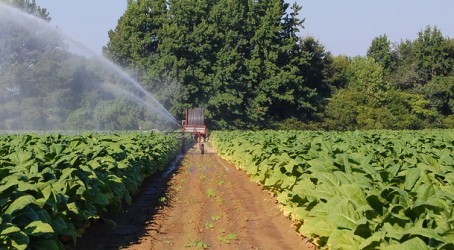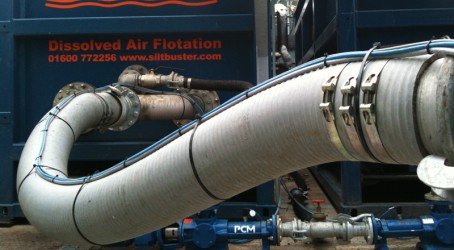The drought may last until Christmas or beyond, according to the Environment Agency, which added 17 counties in the Midlands and South West to its list of afflicted zones last month.
This extension of the regions affected by drought came in the wake of a hosepipe ban imposed in South East England by seven water authorities, which affects 20 million customers. Before announcing its hosepipe ban in April, Thames Water had run a prominent advertising campaign in the capital calling on citizens to save water.
The rationale behind the ban is stark and simple: Thames Water has seen below-average rainfall nearly every month in the area it covers over the past two years. This is the driest two-year period since records began in 1884. Rainfall for March, for example, was 43% below the long-term average.
It’s easy to forget that Britain is not a particularly wet nation. Rome experiences more rainfall annually than London. Dr Richard Coulton of Siltbuster Process Solutions says: “The UK is perceived to be a relatively wet country. It’s very wet in the West and North where the population density is relatively small – but it’s reasonably dry in the South and East where most people live.
“There’s an issue of geography and demographics. Most of the water is in the West and as population density has grown in the East the water supplies have become more stressed.” And these supplies have been further stressed by drop-offs in rainfall in certain regions such as the one covered by Thames Water. Hosepipe bans may become more regular occurrences, although the current one is the London utility’s first for six years.
It’s important not just to focus on domestic consumers’ demand. Some 75% of water consumed in Britain is used by agriculture. Domestic consumers do have a big part to play – in July 2006 Thames Water customers saved 260 million litres thanks to the hosepipe ban.
But Coulton says: “There’s the deeper underlying issue of how we make better use of water for growing crops. We’ve reached the point where supplies are sufficiently stressed that we need to change our culture on how we handle water.
“We need to make better use of resources with more recycling. Industry and agriculture should be looking at how we can reuse water and use grey water for irrigation.”
Coulton’s Siltbuster systems can be used speedily to cope with sudden water shortages. He says comparable technologies could typically take three months or more to deploy in the past because they would be built to order.
“Our philosophy is that if you ring me today you can probably have a piece of equipment tomorrow to meet requirements in terms of separating algae or suspended solids from water,” he says. This means that the technology can be used in agricultural applications quickly when there is, say, a sudden spell of hot weather.
A typical scenario might be that a farmer collects rainwater in lagoons or reservoirs on their land. In hot weather, algae would grow quickly. Siltbuster systems remove the algae and give the farmer a source of water for irrigation of crops or feeding animals, rather than using the mains, saving money.
The technology can also process water from algae-ridden rivers and lakes before use in treatment plants or reservoirs. Coulton says: “In industry, you can focus on treating effluent to a standard where it’s suitable for secondary use as grey water, or taking it all the way back through the recovery process where you can feed some of it back in.”
With the onus on utilities to ensure that as much water as possible is saved in the system, other technological developments that could help to combat drought include devices embedded in the water network that aid in reducing bursts and leaks.
A spin-out company from Southampton University, i2O, has developed a technology that aims to do just that. It has been trialled by all the big water companies in the UK as well as enjoying success overseas. Last year, Severn Trent, Veolia and Yorkshire Water were the first companies to roll it out at home.


The technology works by trying to optimise pressure within the water network according to demand. When demand is low, it makes no sense for pressure to be at the maximum as excess pressure leads to pipe bursts and leaks. But the pressure-reducing valves that feed water from the trunk main to the domestic network are fixed to maintain constant pressure even as demand eases off, such as at night.
The i2O technology allows remote control of these pressure-reducing valves so they can be adjusted automatically and set at the optimum pressure at all times.
Adam Kingdon, i2O’s co-founder and chief executive, says drought is a “pretty tough problem” for all the company’s customers in the UK. “They want to have an immediate hit on their leakage and they are under a lot of pressure when there is a shortage of water. They want to do everything they possibly can to reduce their leakage,” he says.
Kingdon says utilities are looking at i2O’s technology on two bases. First, as a means of quickly reducing leakage; and, second, as a means of remotely controlling the water network to cut down supplies in the event of severe shortages.
“If things get really bad, rather than introducing standpipes or anything dreadful like that, they could manage demand by controlling the pressure remotely – they could reduce it at night for example, which would be much more preferable than cutting people off,” he says.
The i2O technology draws on a variety of disciplines including mechanical engineering, electrical and electronic engineering, and software and systems design. The valves that it controls are typically by the side of the road or under manhole covers without electricity or communications links.
It is necessary to retrofit i2O’s own remotely controlled valves to the existing pressure-reduction valves. The i2O valves are battery-powered and communicate with a central server over the mobile-phone network.
Kingdon says: “On the server we have some very clever software which is collecting all the data from the network and learning its characteristics. Each day it uploads a revised control model to the controller so the valve knows what setting to use during the day.”
Implementing the technology tends to reduce leakage by 20% for a 20% drop in pressure, according to the company.
Kingdon says: “If a water company effectively treats i2O technology as a new source of water, it’s cheaper than building a water treatment plant, which would be 10 times the cost of the system.”
In fact, despite the extent and projected length of this drought, just rushing to build new plant is not always advisable, says Ajay Nair, specialist in wastewater at consultancy MWH.
An example lies in Australia, which may not be as dissimilar to the UK in terms of water as you might think, having 60% of its resources from surface water or rivers and reservoirs. Australia experienced a drought, and rushed to build desalination plants. Now that drought has broken, it is faced with overcapacity.
“They knee-jerked and built one of the largest desalination plants in the world,” says Nair, “and yet the reservoirs are full now. The relative cost of treatment and production of desalinated water is three times that of conventional water. And, if you don’t operate an asset like that, it depreciates rapidly. They were left with an albatross around their necks – effectively capacity they don’t need. It was a reactionary move.”
He argues that countries must take a long-term view of their water resources before making decisions on how to improve them. Local authorities in the UK could work more closely together to pool existing resources and supply water from low-consuming regions to high-consuming ones, he says.
“There is a level of uncertainty with climate change, but it’s quite possible the UK will see drought a lot more often. Those droughts are likely to occur in the regions – so rather than the entire country going into drought you’ll see what we are seeing now in the South East.
“We need to be able to move water resources we have in certain areas to other parts of the country – rather than building desalination plants to supply at point of use when we’ve already got the resources available elsewhere,” says Nair.
Ultimately, although conditions are challenging for the utilities, Nair believes that the solutions are available – but shouldn’t be rushed. “This is not the first time drought has happened, and if we don’t learn from the mistakes that have been made elsewhere it would be criminal.
“For every problem, there’s a solution, but we need to ensure the ones we pick are sustainable and meet the long-term issues facing the UK. And we need to be flexible enough to make sure we don’t end up creating stranded assets – as happened with Australia and the desalination plants,” he says.
